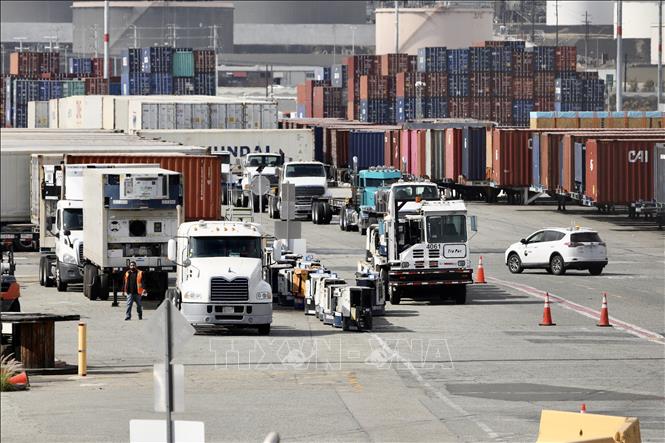
In its latest Economic Outlook Report released on September 23, the Organization for Economic Cooperation and Development (OECD) forecast that the global economy will grow 3.2% in 2025, down 0.1 percentage point from 2024, but 0.3 percentage point higher than the forecast in June 2025.
The OECD forecasts US economic growth in 2025 at 1.8%, 0.2 percentage points higher than its June forecast, thanks to a boom in AI investment, fiscal policies and expected Federal Reserve interest rate cuts that will help offset the impact of rising tariffs, falling net immigration and cuts in federal jobs. The OECD also raised its growth forecast for the world's second-largest economy, China, to 4.9% this year, the eurozone to 1.2% and Japan to 1.1%.
BNP Paribas bank experts also commented that the global economy continues to show good resilience in the context of policy and geopolitical uncertainty, thanks to favorable financial conditions, solid balance sheets of households and businesses, productivity prospects supported by AI and low energy prices.
One of the biggest concerns was that an escalating trade war would cripple global supply chains. But in reality, the US and its European and Asian partners have reached temporary agreements that keep tariffs at “manageable” levels, with the costs shared between exporters, importers and consumers.
The overall picture of the global economy is positive, but experts say the foundation is not yet solid. The first effects of US tariffs have begun to appear on exporters from Japan to Germany, although they are not as severe as previously feared.
The OECD said that companies’ increased imports ahead of the new US tariffs have been an important source of support for global economic growth. The effects of the tariffs have not yet been felt, with initial signs of a tightening of corporate profit margins. However, the effects are becoming more evident in investment choices, labor markets and consumer prices, the OECD said.
The OECD kept its 2026 growth forecast unchanged at 2.9%, as the momentum from commodity hoarding fades and higher tariffs are expected to weigh on investment and trade growth. US economic growth is expected to slow to 1.5% next year, unchanged from the previous forecast. China’s economic growth is also forecast to slow in the second half of 2025, falling to 4.4% in 2026.
In its Asian Development Outlook 2025 report released on September 30, the Asian Development Bank lowered its growth forecast for developing Asia and the Pacific by 0.1 percentage point and 0.2 percentage point for this year and next, respectively, to 4.8% and 4.5%, amid a new global trade environment, with new tariffs and updated trade agreements.
Source: https://baotintuc.vn/kinh-te/kinh-te-the-gioi-chong-chiu-tot-truoc-nhung-cu-soc-chinh-sach-20250930172116812.htm




![[Photo] Prime Minister Pham Minh Chinh chairs the 16th meeting of the National Steering Committee on combating illegal fishing.](https://vphoto.vietnam.vn/thumb/1200x675/vietnam/resource/IMAGE/2025/10/07/1759848378556_dsc-9253-jpg.webp)
































![[Photo] Super harvest moon shines brightly on Mid-Autumn Festival night around the world](https://vphoto.vietnam.vn/thumb/1200x675/vietnam/resource/IMAGE/2025/10/07/1759816565798_1759814567021-jpg.webp)



































































Comment (0)